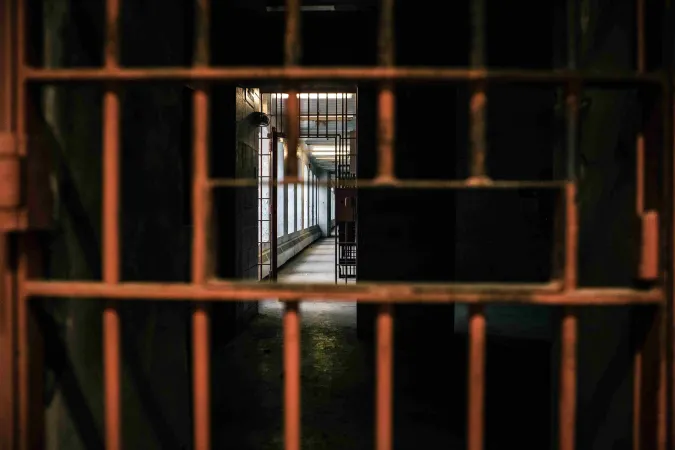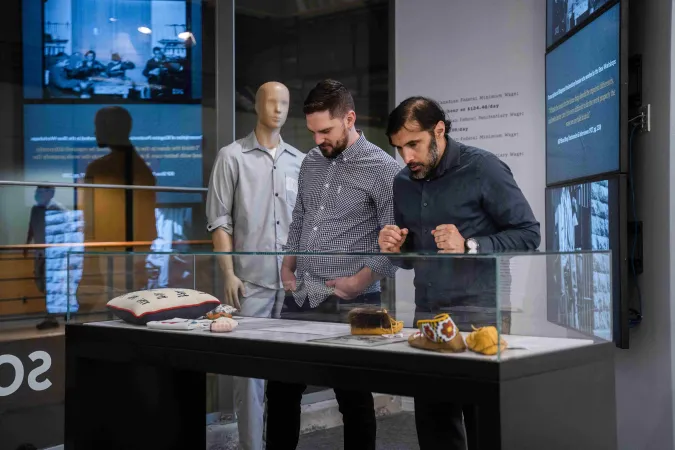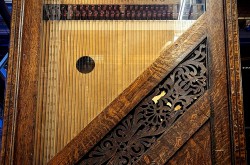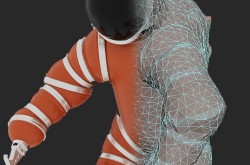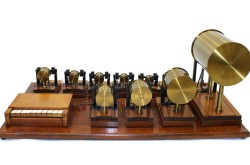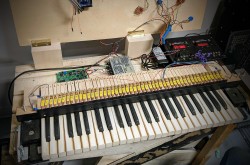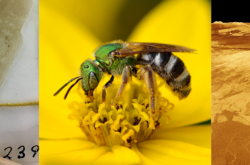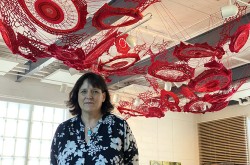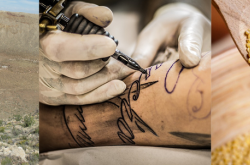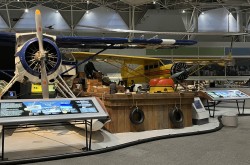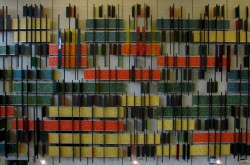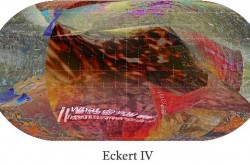Captive Labour
In November 2022, we curated an exhibition called Captive Labour at the Catalyst, an event space on the Toronto Metropolitan University (TMU) campus. The exhibition highlighted historical and current labour programs within the Canadian penitentiary system and was inspired by artifacts in TMU’s Fashion Research Collection. These objects were transferred from Ingenium’s collection in 2020. Ingenium still maintains a number of artifacts from the Kingston Penitentiary in its collection.

Artifacts on display in the Captive Labour exhibition, November 2022.
The Kingston Penitentiary was a maximum-security prison that operated from 1835 until its official closing in 2013. The penitentiary ran workshops where inmates made shoes from the penitentiary’s opening until the 1970s. We examined, and presented in the exhibition, hand tools used to make shoes, shoe lasts, an anvil, shoe parts, and a fly swatter made from scrap items (leather shoe soles and sticks) from the Kingston Penitentiary, as well as photos and quotations from historical interviews with inmates. We found the shoe lasts particularly compelling because of the amount of visible wear and damage on each one. The wear and tear on the lasts are evidence of the scale of production within the shoe workshop.

A penitentiary-made shoe contrasted with a fashionable men’s shoe made by the UK brand Church, both from the 1960s. The penitentiary shoe has uneven stitching, raised seams, rough leather, and unfinished internal sole and heel.
In researching the context of these artifacts, we learned that guards assigned mandatory work placements, and only first-time offenders had access to this, and other, trades training (Vol.6, August 1955 Telescope, 24-25). Correctional Services Canada’s (CSC) intended goal of trades workshops in the early 20th century was to reform and rehabilitate prisoners by teaching skills that would help them find employment after their release. However, the workshop’s focus on production and efficiency made this goal difficult to achieve. The shoe workshop was not craft-based, but used an assembly line, where each inmate completed only one or two tasks. This industrial set-up prevented inmates from developing the full range of necessary skills for employment within the trade. Transcripts from interviews conducted by the Superintendent to the Royal Commission show that inmates complained of poor instruction, with some having more knowledge of shoe making – from work in the trade before incarceration – than instructors (May 1939, KP Shoe Shop Testimonies & Interviews). Inmates also complained that instructors did not allow them to produce quality goods and when they requested more time to complete tasks, they “were rushed and told to work quicker”(May 1939, KP Shoe Shop Testimonies & Interviews).
Initially, shoes made in the Kingston Penitentiary were sold to the public, but after the 19th century, goods produced within prisons were only distributed internally or sold to government services, such as the RCMP and the military. Correspondence between the penitentiary and government services show that the shoes made within the workshop were often so shoddy as to be unusable. For example, seventy-six percent of boots within one shipment to the RCMP in 1938 were rejected due to poor manufacturing (January 14, 1938, Superintendent to Royal Commission).
In the 1930s, inmates received penitentiary-made shoes when they were released. The interview transcripts highlight how the unfashionable shoes visually indicated recent incarceration (May 1939, KP Shoe Shop Testimonies & Interviews). Due to poor construction, the shoes often wore out within weeks, adding to the many challenges former inmates faced reintegrating into the community.

A Captive Labour case showing moccasins (left), as well as products made in British prisons.
In the exhibition, we compared historic Canadian practices to current ones. Trades training started to change in the early 1960s with the development of new labour laws and regulations (CSC). Many inmates took up leatherwork when the penitentiary ended mandatory labour programs and introduced voluntary paid work and hobby crafts. Currently, CORCAN, a special operation agency with CSC, runs employment and employability programs. CORCAN’s website states that they offer on-the-job training, apprenticeship hours, vocational certifications, and essential skills training (CSC, CORCAN). We were curious to see what kind of items were still being made in modern Canadian prisons. To our surprise, footwear is still made within several prisons in the country. Through the CORCAN website, we purchased two pairs of moccasins made at Warkworth Institution in 2022. We displayed these, and material made through Fine Cell Work, a reform program in the United Kingdom, in a display case about contemporary prison education.
Image gallery
Enjoying the Ingenium Channel? Help us improve your experience with a short survey!



